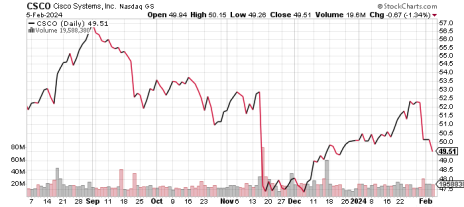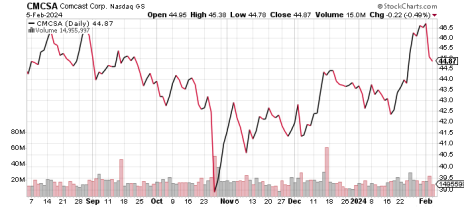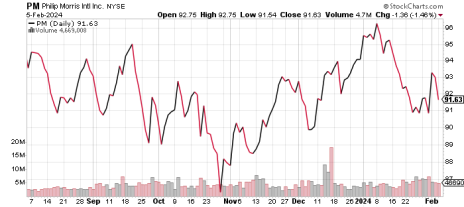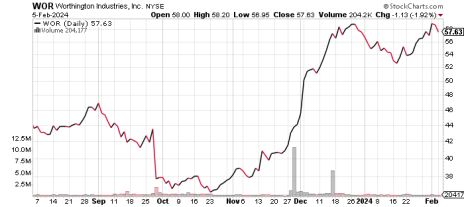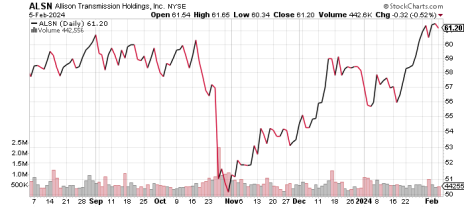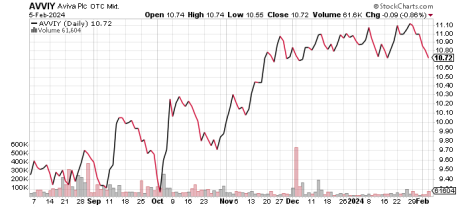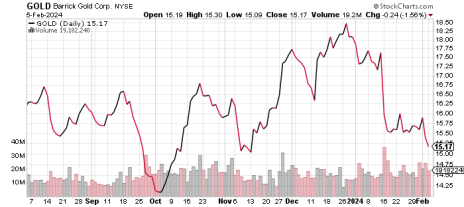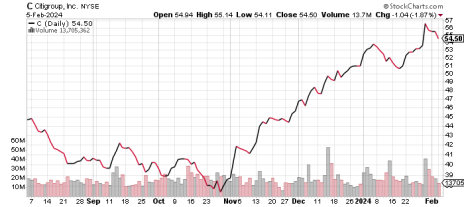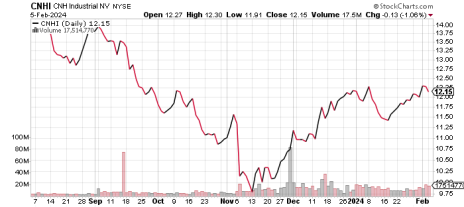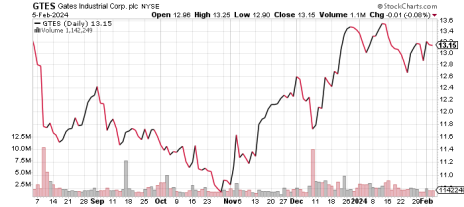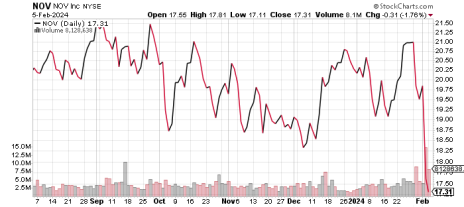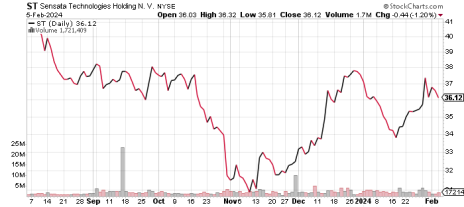Spin-Offs: A Valuable Tool for Investors
Spin-offs should be in every value investor’s toolkit. These situations, which involve the carve-out and divestiture of an operating segment to shareholders, can offer attractive returns. In a typical year, perhaps 50 spin-offs come to market.
Companies do spin-offs primarily because investors undervalue its prospects as a whole. A subsidiary may be too small to be recognized, its strategy and capital requirements may not fit with those of its parent, or its lagging performance may be a drag on the overall company’s results. Spin-off quality varies widely. Some spin-offs represent the unceremonious dumping of a bad business with weak prospects. Investors will want to either avoid these spin-offs, or at least wait for the market to completely capitulate before buying a position. Some spin-offs, on the other hand, are hidden gems that the parent company reluctantly releases. The quality of the business model, the initial debt load and the resilience and compatibility of the product/service offering are useful indicators of where a company sits on the quality spectrum.
Investors should also pay attention to the management of a spun-off company, particularly if the CEO is untested at the helm of a public company. The demands of short-term minded shareholders that want ever-higher share prices, for example, can exert intense performance and time pressures on public company CEOs that can derail otherwise healthy businesses.
We are adding a newly spun-off company as a Buy recommendation – Worthington Enterprises (WOR). “Enterprises” is a high-quality company with strong and experienced public company leadership that sports a fortress balance sheet and generates prodigious free cash flow.
Share prices in the table reflect Monday, February 5 closing prices. Please note that prices in the discussion below are based on mid-day February 5 prices.
Note to new subscribers: You can find additional color on past earnings reports and other news on recommended companies in prior editions and weekly updates of the Cabot Value Investor on the Cabot website.
Send questions and comments to Bruce@CabotWealth.com.
Today’s Portfolio changes
New Buy: Worthington Enterprises (WOR)
Portfolio Changes Since Last Month
None
Upcoming Earnings Reports
Tuesday, February 6: Sensata Technologies (ST)
Thursday, February 8: Philip Morris International (PM)
Thursday, February 8: Gates Industrial (GTES)
Tuesday, February 13: Allison Transmission (ALSN)
Wednesday, February 14: Barrick Gold (GOLD)
Wednesday, February 14: Cisco Systems (CSCO)
Growth & Income Portfolio
Growth & Income Portfolio stocks are generally higher-quality, larger-cap companies that have fallen out of favor. They usually have some combination of attractive earnings growth and an above-average dividend yield. Risk levels tend to be relatively moderate, with reasonable debt levels and modest share valuations.
| Stock (Symbol) | Date Added | Price Added | 2/5/24 | Capital Gain/Loss | Current Dividend Yield | Price Target | Rating |
| Cisco Systems (CSCO) | 11/18/20 | 41.32 | 49.51 | 19.80% | 3.20% | 66 | Buy |
| Comcast Corp (CMCSA) | 10/26/22 | 31.5 | 44.87 | 42.40% | 2.80% | 46 | Hold |
| Philip Morris International (PM) | 9/18/23 | 96.96 | 91.63 | -5.50% | 5.70% | 120 | Buy |
| Current price | 2024 EPS Estimate | 2025 EPS Estimate | Change in 2024 Estimate | Change in 2025 Estimate | P/E 2024 | P/E 2025 | |
| CSCO | 49.50 | 3.94 | 4.11 | 0.1% | 0.2% | 12.6 | 12.0 |
| CMCSA | 45.15 | 4.27 | 4.64 | 0.1% | -0.5% | 10.6 | 9.7 |
| PM | 92.00 | 6.60 | 7.24 | 0.3% | 0.2% | 13.9 | 12.7 |
Cisco Systems (CSCO) is facing revenue pressure as customers migrate to the cloud and thus need less of Cisco’s equipment and one-stop-shop services. Cisco’s prospects are starting to improve under a relatively new CEO, who is shifting Cisco toward a software and subscription model and is rolling out new products, helped by its strong reputation and entrenched position within its customers’ infrastructure. The company is highly profitable and generates vast cash flow. Its announced deal for Splunk will drain most of its cash hoard but we see this as being replenished relatively quickly.
There was no significant company-specific news in the past week.
CSCO shares fell 5% in the past week and have 33% upside to our 66 price target. Based on 2024 estimates, unadjusted for the Splunk acquisition, the valuation is reasonably attractive at 9.3x EV/EBITDA and 12.6x earnings per share. BUY
Comcast Corporation (CMCSA) – Comcast is one of the world’s largest media and entertainment companies. Its properties include Comcast cable television, NBCUniversal (movie studios, theme parks, NBC, Telemundo and Peacock), and Sky media. The Roberts family holds a near-controlling stake in Comcast. Comcast shares have tumbled as worry about cyclical and secular declines in advertising revenues and a secular decline in cable subscriptions as consumers shift toward streaming services, as well as rising programming costs and incremental competitive pressure as phone companies upgrade their fiber networks.
However, Comcast is a well-run, solidly profitable and stable company that will likely continue to successfully fend off intense competition while increasing its revenues and profits, as it has for decades. The company generates immense free cash flow which is more than enough to support its reasonable debt level, generous dividend and sizeable share buybacks.
On Thursday, January 25, Comcast reported an encouraging quarter, with results that showed flat or incremental improvement from a year ago and that were generally in-line or above estimates. Free cash flow was strong at $1.7 billion. Debt remains reasonable and will decline with the anticipated Hulu proceeds.
Full year 2024 guidance is for essentially more of the same: incremental pricing that offsets customer losses, with disciplined capital spending that preserves strong free cash flow. Comcast increased its share buyback authorization to $15 billion (about 8% of the current market cap) and raised its dividend by 7%. All-in, Comcast continues to navigate its competitive environment well while rewarding patient shareholders with cash returns.
In Connectivity & Platforms (broadband, video, wireless), revenues were flat as 4% higher domestic pricing offset the recurring downtick in the number of customers. Cash operating profits rose 3%.
In Content & Experiences (NBC, Peacock, Telemundo, Universal Pictures, Universal theme parks, Sky Studios), revenues rose 6% as Theme Parks revenues surged 12%. Adjusted EBITDA rose 2%, as record-high Theme Parks profits and a surge in Studio profits – from their highly-successful movie slate – were nearly offset by a slump in Media profits due to falling advertising revenues.
In the quarter, revenues rose 2% and were 3% above estimates. Adjusted earnings of $0.84/share increased 2% and were 6% above estimates. Adjusted EBITDA of $8.0 billion was flat compared to a year ago and fell 3% below estimates.
Rating discussion – shares remain a true HOLD:
Comcast’s basic fundamentals – revenues, profits, cash flow, balance sheet – have all moved in the right direction and are sturdy. The share valuation, which includes likely proceeds from the sale of Hulu to Disney, is reasonable but not particularly attractive at about 7x EBITDA. While Comcast is an exceptionally well-run and well-positioned company, we could easily see how its growth is likely to stall: fixed wireless and cord-cutting are grinding away at Comcast’s subscriber numbers. The company recognizes this, as it said that it expects revenue growth to be driven by price increases rather than by new customers. In an era where consumers are frustrated with rising prices and have an increasing number of lower-cost options, Comcast’s ability to offset customer losses with rising prices will almost certainly be constrained. Comcast’s other businesses are performing well but these are cyclical and will likely slip at some point.
We are reluctant to sell the reasonably priced shares of a company with fundamental and managerial strengths like Comcast’s. The company’s core assets seem unlikely to lose their relevance, and the value of its positioning in fiber/cable assets should continue to increase as consumers shift away from traditional TV. So, all-in, we are keeping Comcast at a HOLD, meaning that it’s not time to sell nor time to re-load.
Comcast shares dipped last Friday as competitor Charter Communications (owner of the Spectrum cable/internet brand) reported disappointing results.
Comcast shares fell 2% in the past week and are essentially at our 46 price target. HOLD
Philip Morris International (PM) – Based in Connecticut, Philip Morris owns the global non-U.S. rights to sell Marlboro cigarettes, the world’s best-selling cigarette brand. Cigarettes comprise about 65% of PMI’s revenues. The balance of its revenues is produced by smoke-free tobacco products. The cigarette franchise produces steady revenues and profits while its smoke-free products are profitable and growing quickly. The upcoming full launch of IQOS products in the United States, a wider launch of the IQOS ILUMA product and the recent $14 billion acquisition of Swedish Match should help drive new growth.
The company is highly profitable, generates strong free cash flow and carries only modestly elevated debt (at about 3.2x EBITDA) which it will whittle lower over the next few years. The share valuation at about 13.5x EBITDA and 15.6x per-share earnings is too low in our view. Primary risks include an acceleration of volume declines and/or deteriorating pricing, higher excise taxes, new regulatory or legal issues, slowing adoption of its new products, and higher marketing costs. A strong U.S. dollar will weigh on reported results. While unlikely, Philip Morris could acquire Altria, thus re-uniting the global Marlboro franchise.
The company reports earnings on Thursday, February 8, with a consensus earnings estimate of $1.45/share.
PMI’s shares were flat in the past week and have 30% upside to our 120 price target. The shares offer an attractive 5.7% dividend yield. BUY
Buy Low Opportunities Portfolio
Buy Low Opportunities Portfolio stocks include a wide range of value opportunities. These stocks carry higher risk than our Growth & Income stocks yet also offer more potential upside. This group may include stocks across the quality and market cap spectrum, including those with relatively high levels of debt and a less-clear earnings outlook. The stocks may not pay a dividend. In all cases, the shares will trade at meaningful discounts to our estimate of fair value.
| Stock (Symbol) | Date Added | Price Added | 2/5/24 | Capital Gain/Loss | Current Dividend Yield | Price Target | Rating |
| Allison Transmission Hldgs (ALSN) | 2/23/22 | 39.42 | 61.2 | 55.30% | 1.50% | 59 | Hold |
| Aviva (AVVIY) | 3/3/21 | 10.75 | 10.72 | -0.30% | 7.80% | 14 | Buy |
| Barrick Gold (GOLD) | 3/17/21 | 21.13 | 15.17 | -28.20% | 2.60% | 27 | Buy |
| Citigroup (C) | 11/24/21 | 67.28 | 54.5 | -19.00% | 3.90% | 85 | Buy |
| CNH Industrial (CNHI) | 11/30/23 | 10.74 | 12.15 | 13.10% | 3.30% | 15 | Buy |
| Gates Industrial Corp (GTES) | 8/31/22 | 10.72 | 13.15 | 22.70% | 0.00% | 16 | Buy |
| NOV, Inc (NOV) | 4/25/23 | 18.19 | 17.31 | -4.80% | 1.20% | 25 | Buy |
| Sensata Technologies (ST) | 2/17/21 | 58.57 | 36.12 | -38.30% | 1.30% | 57 | Hold |
| Worthington Enterprises (WOR) | 2/6/24 | na | na | na | 1.60% | 73 | New Buy |
| Current price | 2024 EPS Estimate | 2025 EPS Estimate | Change in 2024 Estimate | Change in 2025 Estimate | P/E 2024 | P/E 2025 | |
| ALSN | 60.81 | 6.95 | 7.65 | 0.0% | 0.0% | 8.7 | 7.9 |
| AVVIY | 10.66 | 0.44 | 0.49 | -0.5% | -0.2% | 24.3 | 21.8 |
| GOLD | 15.15 | 1.07 | 1.21 | -2.8% | -2.5% | 14.2 | 12.5 |
| C | 54.54 | 6.00 | 7.12 | 0.0% | 0.0% | 9.1 | 7.7 |
| CNHI | 12.06 | 1.51 | 1.61 | -0.1% | -0.7% | 8.0 | 7.5 |
| GTES | 13.06 | 1.35 | 1.59 | 0.0% | 0.0% | 9.7 | 8.2 |
| NOV | 17.35 | 1.62 | 1.90 | -4.9% | -4.9% | 10.7 | 9.1 |
| ST | 36.00 | 3.97 | 4.47 | 0.0% | 0.0% | 9.1 | 8.1 |
| WOR | 57.49 | 3.47 | 3.56 | na | na | 16.6 | 16.2 |
New Buy: Worthington Enterprises (WOR) – Following the split-up of Worthington Industries late last year, “Enterprises” focuses on producing specialized building products (42% of sales) and consumer products (48%), many with highly valuable brand names including Clark-Dietrich and Benzomatic. The value of this segment was previously obscured by the market’s perception that the original Worthington Industries was primarily a steel processor. While the market sees an average company with a mix of only partly-related metal products, we see a high-quality company with strong positions in valuable and profitable niches, backed by capable management and a solid balance sheet.
One indicator of the value of its niches is the healthy 21% EBITDA margin. Another is that most of its businesses have high barriers to entry – the gas cylinders operation, for example, meets demanding safety standards and is subject to only limited competition from cheaper imports.
As a company, Worthington retains the high-quality culture created in 1955 when John McConnell founded the original Worthington Industries. CEO Andy Rose was CEO of Worthington Industries prior to the spin-off, providing valuable public company CEO experience. Rose is a 15-year veteran of the company, so he is fully immersed in the culture. He also brings some capital market savvy from his prior experience as a private equity investor. The CFO is a Worthington veteran and his prior role as CFO of the former parent company helps round out the leadership team. The company generates healthy profits and prodigious free cash flow (almost 10% of its market value), partly due to its asset-light business model.
While optically the shares do not appear inexpensive, at 10.1x EBITDA and 16.6x per share earnings, this company is under-earning its potential due to its too-low leverage (only 1.0x total debt/EBITDA which is almost fully offset by cash), immense free cash flow and temporarily elevated transition costs. We see Worthington Enterprises as putting its financial capacity to better use through a combination of small-ish acquisitions, an uptick to the dividend and the launch of share repurchases. The new company appears to have only started on its new path.
We are setting a 73 price target on WOR shares. BUY
Disclosure: The chief analyst personally owns shares of Worthington Enterprises (WOR).
Allison Transmission Holdings, Inc. (ALSN) – Allison Transmission is a midcap manufacturer of vehicle transmissions. While many investors view this company as a low-margin producer of car and light truck transmissions that is destined for obscurity in an electric vehicle world, Allison actually produces no car or light truck transmissions. Rather, it focuses on the school bus and Class 6-8 heavy-duty truck categories, where it holds an 80% market share. Its EBITDA margin is sharply higher than its competitors and on-par with many specialty manufacturers. And, it is a leading producer and innovator in electric axles which all electric trucks will require. The company generates considerable free cash flow and has a low-debt balance sheet. Its capable leadership team keeps its shareholders in mind, as the company has reduced its share count by 38% in the past five years.
There was no significant company-specific news in the past week.
ALSN shares were flat in the past week and are 3% above our 59 price target. With the company reporting earnings in a week, we are reluctant to change our rating. The company is well-run and the shares remain arguably inexpensive at 8.7x per share earnings and 7x EBITDA barring an unexpected collapse in fundamentals. For now, we are keeping our rating at HOLD.
Aviva, plc (AVVIY), based in London, is a major European company specializing in life insurance, savings and investment management products. Amanda Blanc, hired as CEO in July 2020, is revitalizing Aviva’s core UK, Ireland and Canada operations following her divestiture of other global businesses. The company now has excess capital which it is returning to shareholders as likely hefty dividends following a sizeable share repurchase program. While activist investor Cevian Capital has closed out its previous 5.2% stake, highly regarded value investor Dodge & Cox now holds a 5.0% stake, providing a valuable imprimatur and as well as ongoing pressure on the company to maintain shareholder-friendly actions.
There was no significant company-specific news in the past week.
Aviva shares fell 4% in the past week and have 31% upside to our 14 price target. Based on management’s guidance for the 2023 full-year dividend, which we believe is a sustainable base level, the shares offer a generous 7.9% yield. We anticipate a dividend increase for 2024. On a combined basis, the dividend and buybacks offer more than a 10% “shareholder yield” to investors. BUY
Barrick Gold (GOLD), based in Toronto, is one of the world’s largest and highest quality gold mining companies. About 50% of its production comes from North America, with the balance from Africa/Middle East (32%) and Latin America/Asia Pacific (18%). Barrick will continue to improve its operating performance (led by its highly capable CEO), generate strong free cash flow at current gold prices, and return much of that free cash flow to investors while making minor but sensible acquisitions. Also, Barrick shares offer optionality – if the unusual economic and fiscal conditions drive up the price of gold, Barrick’s shares will rise with it. Given their attractive valuation, the shares don’t need this second (optionality) point to work – it offers extra upside. Barrick’s balance sheet has nearly zero debt net of cash. Major risks include the possibility of a decline in gold prices, production problems at its mines, a major acquisition and/or an expropriation of one or more of its mines.
On January 16, the company reported disappointing 4Q gold production of 1.04 million tons, which led to a miss of its full-year guidance. Barrick said it produced 4.05 million ounces for the full year, which fell 4% below the low-end of its 4.2 - 4.6 million ounce guidance range. Copper production hit the low end of its guidance range. Barrick continues to struggle with meeting its gold production guidance, which suggests that the management is either too hopeful or is unable to generate new growth. Neither of these traits are encouraging. One risk is that Barrick overpays for an acquisition to buy growth.
One of Barrick’s largest mines, the Loulo-Gounkoto mine in Mali, could be increasingly vulnerable to disruption or expropriation. Armed groups have gained control of nations across the Sahel region of Africa, including Mali. As such, Barrick’s mine (at the western edge of Mali) would seem to be an attractive target for militants seeking recurring sources of cash – a literal “gold mine.” The Mali mine produces about 14% of Barrick’s output. Given this risk and Barrick’s already-blowing fundamental headwinds (weak production, rising costs), we are considering swapping out Barrick for another, better-positioned gold company.
Over the past week, commodity gold rose fractionally to $2,036/ounce. Gold seems to be holding its $2,000+ pricing. Foreign central banks have stepped up their buying, which is offsetting pressure from incrementally higher interest rates in the United States. But, financial investors including hedge funds continue to have low exposure to gold, based on government reports, which could be a bullish indicator.
Our view on gold prices avoids some of these technicals and is based on what we believe is a structural change to inflation levels (no longer at near zero). These changes include war, government spending, crime, oil prices and past-the-peak fading of the benefits of global free trade, in addition to a tight labor market. Aggregate inflation statistics include subcomponents which show starkly different pictures of pricing trends, and these trends can and have changed from month to month. Despite the favorable broad trend, there remains a reasonably good chance that inflation could remain above a 3% pace indefinitely. This would imply permanent 4-6% interest rates. Recent comments by the Fed suggest that rate cuts are increasingly unlikely in the near-term.
The 10-year Treasury yield ticked up 7 basis point to 4.18%. The US Dollar Index (the dollar and gold usually move in opposite directions) ticked up fractionally to 104.56.
Investors and commentators offer a wide range of outlooks for the economy, interest rates and inflation. We have our views but hold these as more of a general framework than a high conviction posture. Investing in gold-related equities is a long-term decision – investors shouldn’t allow near-term weakness to deter their resolve.
Barrick shares fell 4% in the past week, partly due to rising interest rates. The shares remain depressed despite gold prices above the $1,800 - $2,000 range, indicating that investors have no confidence in gold prices and little confidence in the company’s ability to generate higher cash flow. Barrick shares have 78% upside to our 27 price target. BUY
Citigroup (C) – Citi is one of the world’s largest banks, with over $2.4 trillion in assets. The bank’s weak compliance and risk-management culture led to Citi’s disastrous and humiliating experience in the 2009 global financial crisis, which required an enormous government bailout. The successor CEO, Michael Corbat, navigated the bank through the post-crisis period to a position of reasonable stability. Unfinished, though, is the project to restore Citi to a highly-profitable banking company, which is the task of new CEO Jane Fraser. Investors have lost hope in Citigroup, creating an impressive bargain.
On Friday, January 12, Citi reported a highly scrubbed but reasonable quarter. Scrubbed revenues rose 2% while scrubbed earnings fell 24%. The Services segment and the US Personal Banking business produced strong results, but Markets and Banking results were sloppy and the Wealth segment was weak. CEO Fraser said that the new 5-segment structure is now in place and that “2024 will be a turning point” for the transformation, although 2024 guidance seems a bit optimistic. Capital and credit remain healthy while deposits and loans were reasonably steady. Citi has set aggressive revenue and cost-cutting targets as CEO Fraser has stepped up her massive full-company overhaul. The shares trade at 60% of the updated tangible book value of $86.19/share, as investors have little confidence in a favorable outcome. The dividend appears solid, and Citi repurchased about $500 million of shares in the quarter, indicating that management and regulators have some elevated degree of confidence in Citi’s capital level and capital generation. No change to our rating.
In the quarter, revenues of $17.4 billion fell 3% and were 7% below estimates. Excluding the impact of divestitures, revenues rose 4%, or +2% if the Argentina currency devaluation were also factored in. Adjusted earnings of $0.84/share fell 24% but were 22% above estimates. Earnings in both periods were highly scrubbed, and in different ways, so the comparison even on adjusted earnings isn’t entirely clean. Major adjustments included the $1.7 billion FDIC special assessment, a $1.3 billion reserve build for Russia and Argentina, an $880 million revenue impact from the Argentine currency devaluation and a $780 million charge for Citi’s restructuring programs.
There was no significant company-specific news in the past week.
Citi shares rose 1% in the past week and have 56% upside to our 85 price target. The shares remain attractive as they trade at about 63% of tangible book value of $86.19. The dividend offers investors a 3.9% yield.
Citi’s dividend yield has dipped below the 10-year US Treasury yield. Nevertheless, Citi shares offer considerably more upside price potential than a Treasury bond. Clearly, the Citi share price and dividend payout carry considerably more risk than a Treasury bond, but at the current valuation Citi shares would seem to have a remarkably better risk/return trade-off. BUY
CNH Industrial (CNHI) – This company is a major producer of agriculture (80% of sales) and construction (20% of sales) equipment and is the #2 ag equipment producer in North America (behind Deere). Its shares have slid from their peak and now trade essentially unchanged over the past 20 years. While investors see an average cyclical company at the cusp of a downturn, with a complicated history and share structure, we see a high quality and financially strong company that is improving its business prospects and is simplifying itself yet whose shares are trading at a highly discounted price. See our November 30 Alert and the December 5 Monthly letter for more color on our thesis.
There was no significant company-specific news in the past week.
CNH’s shares were flat in the past week and have 24% upside to our 15 price target. The 3.3% dividend yield offers a worthwhile interim cash return. BUY
Gates Industrial Corp, plc (GTES) – Gates is a specialized producer of industrial drive belts and tubing. While this niche might sound unimpressive, Gates has become a leading global manufacturer by producing premium and innovative products. Its customers depend on heavy-duty vehicles, robots, production and warehouse machines and other equipment to operate without fail, so the belts and hydraulic tubing that power these must be exceptionally reliable. Few buyers would balk at a reasonable price premium on a small-priced part from Gates if it means their million-dollar equipment keeps running. Even in automobiles, which comprise roughly 43% of its revenues, Gates’ belts are nearly industry-standard for their reliability and value. Helping provide revenue stability, over 60% of its sales are for replacements. Gates is well-positioned to prosper in an electric vehicle world, as its average content per EV, which require water pumps and other thermal management components for the battery and inverters, is likely to be considerably higher than its average content per gas-powered vehicle.
The company produces wide EBITDA margins, has a reasonable debt balance and generates considerable free cash flow. The management is high-quality. In 2014, private equity firm Blackstone acquired Gates and significantly improved its product line-up and quality, operating efficiency, culture and financial performance. Gates completed its IPO in 2018. Following several sell-downs, Blackstone has a 37% stake today.
The company reports earnings on Thursday, February 8, with a consensus earnings estimate of $0.28/share.
Gates shares fell 1% in the past week and have 23% upside to our 16 price target. BUY
NOV, Inc (NOV) – This high quality mid-cap company, formerly named National Oilwell Varco, builds drilling rigs and produces a wide range of gear, aftermarket parts and related services for efficiently drilling and completing wells, producing oil and natural gas, constructing wind towers and kitting drillships. About 64% of its revenues are generated outside of the United States. Its emphasis on proprietary technologies makes it a leader in both hardware, software and digital innovations, while strong economies of scale in manufacturing and distribution as well as research and development further boost its competitive edge. The company’s large installed base helps stabilize its revenues through recurring sales of replacement parts and related services.
We see the consensus view as overly pessimistic, given the company’s strong position in an industry with improving conditions, backed by capable company leadership and a conservative balance sheet.
On Thursday, February 1, NOV reported a decent quarter and full year that showed continued revenue growth and margin improvements as well as strong free cash flow. Some of the fourth-quarter revenue growth came from filling a glut of back orders built up from supply chain delays – this “flush” will dampen first-quarter results. The balance sheet remains sturdy.
All-in, the underlying fundamental trend of more drilling activity in international and offshore markets is likely to continue for many more years and more than offset weak North American activity. Oil drilling cycles can easily stretch to 5-10 years, and it appears that the current upcycle is starting, even if grinding forward only slowly. NOV shares remain quite attractive.
Adjusted earnings of $0.38/share fell short of the $0.40 estimate. North American demand was sluggish while higher medical and insurance costs, along with the costs of the Argentine currency devaluation, weighed on profits. Demand for international land and offshore equipment, including floating rigs, continues to increase. Independent oil companies have returned to deepwater drilling after having avoided these regions for a decade. The outlook for North America remains subdued at best. Management guided for higher free cash flow in 2024, which would allow more capital to be returned to shareholders. NOV’s $0.05/share quarterly dividend has remained unchanged since 2016 and the company hasn’t repurchased shares in at least 7 years.
Despite its reputation as a heavy iron company, NOV continues to make large investments in new technologies, particularly software which improves drilling and operational outcomes while reducing costs. NOV offers impressive software tools that bring sophisticated data-analysis capabilities to exploration and production companies. NOV’s deep well experience is allowing it to expand into the carbon sequestration industry.
In the quarter, revenues rose 13% and were 4% above estimates. Adjusted earnings of $0.38/share increased from 0.26 a year ago but fell 18% below estimates. Adjusted EBITDA of $294 million rose 27% but was 2% below estimates. Incremental margins (incremental EBITDA divided by incremental revenues) were 23.3%, illustrating that nearly a quarter of new revenues are flowing directly to profits.
The price of West Texas Intermediate (WTI) crude oil fell 6% to $71.88/barrel. The near-term lack of major new tensions in the Middle East has weighed on oil prices, and the oil markets seem well supplied for now.
Outcomes in wars are unpredictable. The potential for sharp oil price volatility is higher with the increasingly complicated game of shifting geopolitical and economic alignments. Geopolitical conditions in the Middle East continue to inch closer to a hot regional conflict, which would almost certainly drive oil prices to at least $150/barrel.
The price of Henry Hub natural gas ticked lower to $2.06/mmBtu (million BTU). One new factor weighing on the price is President Biden’s plan to pause new permits for the export of liquified natural gas. If implemented, the pause would trap more gas in the domestic market, thus pushing prices lower. Barring a surprising deep freeze, cold weather will likely play a diminishing role in setting gas prices. However, while natural gas prices have collapsed 45% from their $3.75 pre-winter peak, they have rarely dipped below $2 in the past 20 years.
NOV shares fell 17% in the past week and have 44% upside to our 25 price target. The dividend produces a reasonable 1.2% dividend yield. BUY
Sensata Technologies (ST) is a $3.8 billion (revenues) producer of nearly 47,000 highly engineered sensors used by automotive (60% of revenues), heavy vehicle, industrial and aerospace customers. About two-thirds of its revenues are generated outside of the United States, with China producing about 21%. Investors undervalue Sensata’s durable franchise. Its sensors are typically critical components that generally produce high profit margins. As the sensors’ reliability is vital to safely and performance, customers are reluctant to switch to another supplier that may have lower prices but also lower or unproven quality. Sensata has an arguably under-leveraged balance sheet and generates healthy free cash flow. The relatively new CEO will likely continue to expand the company’s growth potential through acquisitions. Electric vehicles are an opportunity as they expand Sensata’s reachable market. Our Sensata investment remains an underperforming (from a business fundamentals perspective) work in progress.
The company reports earnings on Tuesday, February 6, with a consensus earnings estimate of $0.86/share.
The shares will likely remain weak or stagnant for the near-term due to the company’s weak fundamentals and average leadership. We will wait for a favorable change in investor sentiment but are poised to pull the plug. ST shares rose 1% in the past week and have 58% upside to our recently reduced 57 price target. HOLD
Strong Buy – This stock offers an unusually favorable risk/reward trade-off, often one that has been rated as a Buy yet the market has sold aggressively for temporary reasons. We recommend adding to existing positions.
Buy – This stock is worth buying.
Hold – The shares are worth keeping but the risk/return trade-off is not favorable enough for more buying nor unfavorable enough to warrant selling.
Sell – This stock is approaching or has reached our price target, its value has become permanently impaired or changes in its risk or other traits warrant a sale.
Note for stock table: For stocks rated Sell, the current price is the sell date price.
Disclosure: The chief analyst of the Cabot Value Investor personally holds shares of every Recommended security. The chief analyst may purchase or sell recommended securities but not before the fourth day after any changes in recommendation ratings have been emailed to subscribers.
The next Cabot Value Investor issue will be published on March 5, 2024.
Copyright © 2024. All rights reserved. Copying or electronic transmission of this information without permission is a violation of copyright law. For the protection of our subscribers, copyright violations will result in immediate termination of all subscriptions without refund. Disclosures: Cabot Wealth Network exists to serve you, our readers. We derive 100% of our revenue, or close to it, from selling subscriptions to our publications. Neither Cabot Wealth Network nor our employees are compensated in any way by the companies whose stocks we recommend or providers of associated financial services. Employees of Cabot Wealth Network may own some of the stocks recommended by our advisory services. Disclaimer: Sources of information are believed to be reliable but they are not guaranteed to be complete or error-free. Recommendations, opinions or suggestions are given with the understanding that subscribers acting on information assume all risks involved. Buy/Sell Recommendations: are made in regular issues, updates, or alerts by email and on the private subscriber website. Subscribers agree to adhere to all terms and conditions which can be found on CabotWealth.com and are subject to change. Violations will result in termination of all subscriptions without refund in addition to any civil and criminal penalties available under the law.
